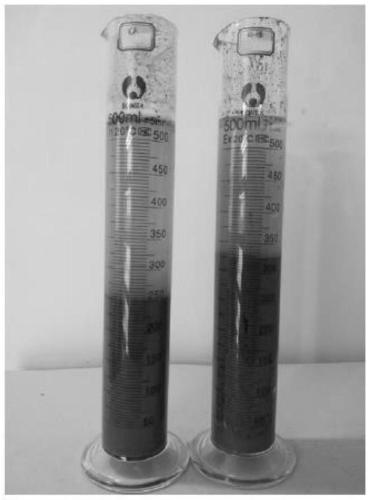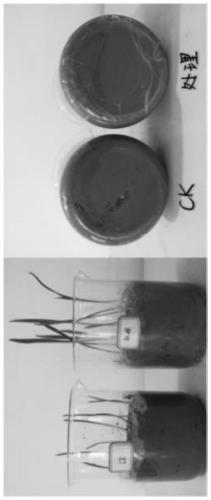Soil loosening activator and application thereof
A technology of soil loosening and activator, which is applied in the fields of chemical industry and agriculture, can solve the problems of irrational fertilization and planting habit soil problems, excessive fertilization and improper methods, and low utilization rate of chemical fertilizers in the current season, so as to enhance the penetration capacity of water and fertilizer, improve Effectiveness of use, stability, and production-increasing effects
- Summary
- Abstract
- Description
- Claims
- Application Information
AI Technical Summary
Problems solved by technology
Method used
Image
Examples
Embodiment 1
[0024] The formula (mass percentage) is: 40% of polyacrylamide, 25% of lignin, 10% of sodium dodecylbenzenesulfonate, and 25% of additives. Wherein the auxiliary agent comprises the following components by mass percentage: inorganic salt (10% of phosphate, 5% of carbonate, 5% of silicate) and organic auxiliary agent (3% of carboxymethyl cellulose, 1% of sodium toluenesulfonate ), anti-caking agent 1%.
[0025] The preparation steps are image 3 shown;
[0026] The sample is in the form of white powder, and the pH of its solution (diluted 200 times) is measured to be 6.5-7.0.
Embodiment 2
[0027] Example 2: Effect of sample on soil porosity and field water holding capacity
[0028] 2.1. Purpose of the experiment
[0029] By measuring the changes of soil porosity and soil field water holding capacity before and after use, the change of soil porosity reflects the improvement effect of the sample on the soil structure, and the field water holding capacity value reflects the size of the soil water holding capacity and the improvement of the sample to the soil moisture. Effect.
[0030] 2.2. Test materials
[0031] Ring knife soil extractor, balance, pycnometer, heating mantle, oven, filter paper, petri dish, porcelain plate, etc.
[0032] 2.3. Test method
[0033] Choose a piece of 100m 2 The soil was tested by dividing it into two pieces, one piece was irrigated with the sample (200g per mu, dissolved in 200-400kg water first, and then flushed with water), and the other piece was irrigated with water. One week later, soil was taken from both the treated field ...
Embodiment 3
[0047] Embodiment 3: the influence of sample on the growth of wheat seedlings after improving the soil
[0048] 3.1 Purpose of the test
[0049] Through the indoor measurement, the influence of the sample on the growth of wheat seedlings after improving the soil provides a reference for the field test.
[0050] 3.2 Test conditions
[0051] Room temperature (20°C).
[0052] 3.3 Test steps
[0053] Control (CK): 500g of soil is loaded into a 500ml beaker, 8 grains of wheat are sown in each beaker, and water is poured until the soil is moistened;
[0054] Treatment (sample): put 500g soil and 1g sample in a 500ml beaker, mix evenly, sow 8 grains of wheat in each beaker, and pour water until the soil is moist;
[0055] Each treatment repeats 20 groups, and after germination, keep the soil moist and cultivate for 8 days, each group randomly selects 5 plants, and carries out investigations on shoot length, root length and root number, the results are as follows: figure 2 , Tab...
PUM
| Property | Measurement | Unit |
|---|---|---|
| Density | aaaaa | aaaaa |
| Proportion | aaaaa | aaaaa |
| Proportion | aaaaa | aaaaa |
Abstract
Description
Claims
Application Information
 Login to View More
Login to View More - R&D
- Intellectual Property
- Life Sciences
- Materials
- Tech Scout
- Unparalleled Data Quality
- Higher Quality Content
- 60% Fewer Hallucinations
Browse by: Latest US Patents, China's latest patents, Technical Efficacy Thesaurus, Application Domain, Technology Topic, Popular Technical Reports.
© 2025 PatSnap. All rights reserved.Legal|Privacy policy|Modern Slavery Act Transparency Statement|Sitemap|About US| Contact US: help@patsnap.com



